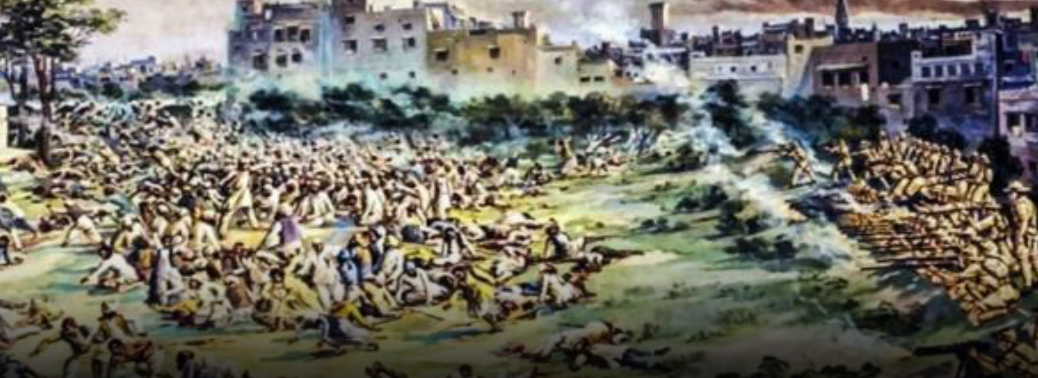An ODE to Martyrs of Jallianwala Bagh
13, Apr 2019

Prelims level : Art and Culture
Mains level : General Studies - I: Indian Heritage and Culture, History and Geography of the World and Society.
Why in News:
- One of the first poems written in protest after the Jallianwala Bagh massacre of 1919 is being republished to mark the centenary of the tragedy that galvanised the movement for Indian
Background:
- Khooni Vaisakhi, a classic work of protest poetry by the late Nanak Singh, was translated by his grandson Navdeep
- Banned in 1920 by the British after its initial publication, acclaimed Punjabi writer Nanak Singh’s poem on the Jallianwala Bagh massacre has now been translated into English
- Singh was present at Jallianwala Bagh on April 13, He was 22 years old at the time. As the British troops opened fire on the unarmed gathering protesting against the Rowlatt Act, killing hundreds, Singh fainted and his unconscious body was piled up among the corpses.
- After going through the traumatic experience, he proceeded to write “Khooni Vaisakhi”, a long poem that narrates the political events in the run-up to the massacre and its immediate
- The poem was a scathing critique of the British Raj and was banned soon after its publication. Its manuscript was subsequently lost.
- After long years, the poem has been rediscovered and now translated into English by the
- author’s grandson and diplomat, Navdeep Suri.
Jallianwala bagh massacre:
- He situation in Punjab was alarming as there were riots and protests against the Rowlatt Punjab was put under martial law which meant that it became unlawful for more than 4 people to assemble at a place.
- The Lieutenant-Governor of Punjab at that time was Michael O’Dyer. Lord Chelmsford was India’s Viceroy. On the day of the festival of Baisakhi on 13th April 1919 in Jallianwala Bagh, a public garden in Amritsar, a crowd of non-violent protestors had gathered. Also among the crowd were pilgrims who had come to celebrate
- General Dyer came there with his troops and blocked the only narrow entrance to the garden. Then, without warning, he ordered his troops to fire at the unarmed crowd which included children as well. The indiscriminate firing went on for about 10 minutes which resulted in the deaths of at least 1000 people and injured more than 1500
- This tragedy came as a rude shock to Indians and totally destroyed their faith in the British system of National leaders condemned the act and Dyer unequivocally.
- However, Dyer was appreciated by many in Britain and the British in India although some people in the British government were quick to criticise it.
- The government set up the Hunter Commission to inquire into the Although the commission condemned the act by Dyer, it did not impose any disciplinary action against him. He was relieved of his duties in the army in 1920.
- In protest against the massacre and the British failure to give due justice to the victims, Rabindranath Tagore gave up his knighthood and Gandhiji relinquished his title ‘Kaiser-e- hind’ bestowed on him by the British for his services during the Boer War in South
- Michael O’Dwyer, the then Lieutenant-Governor of Punjab, who had approved the actions of Brigadier General Dyer, was assassinated by Udham Singh in London in 1940 as revenge against the Udham Singh is believed to have witnessed the massacre as a child.






